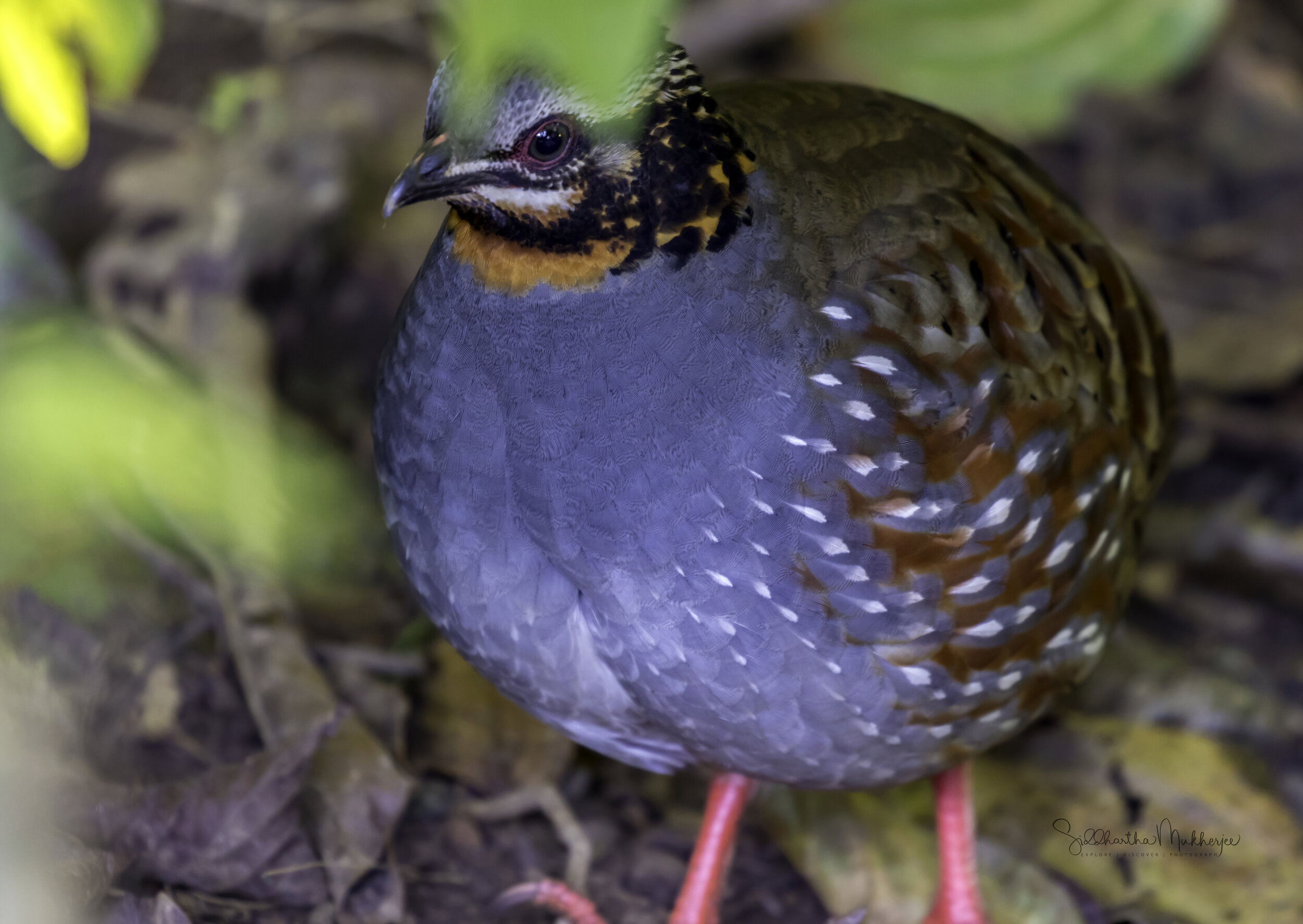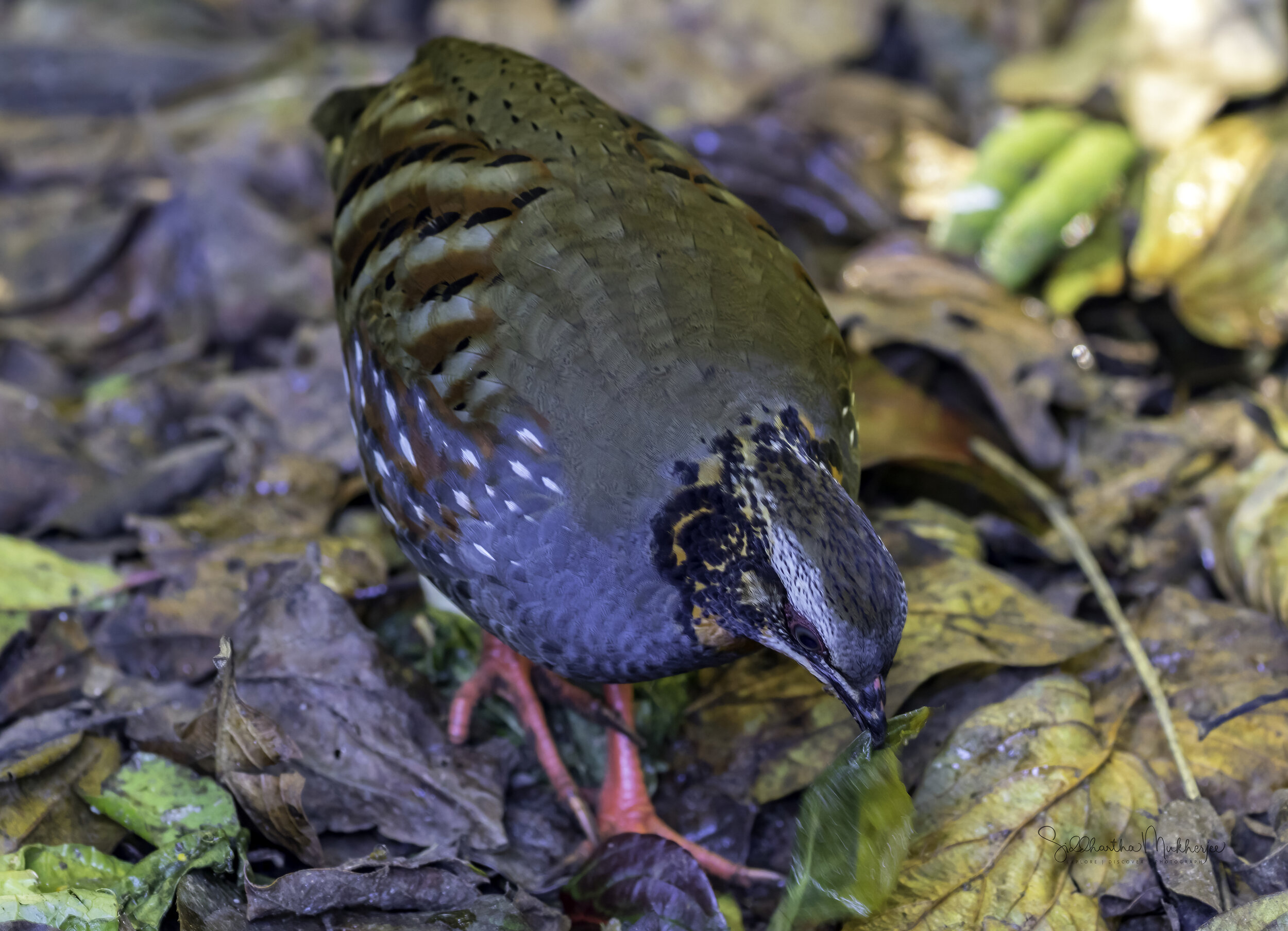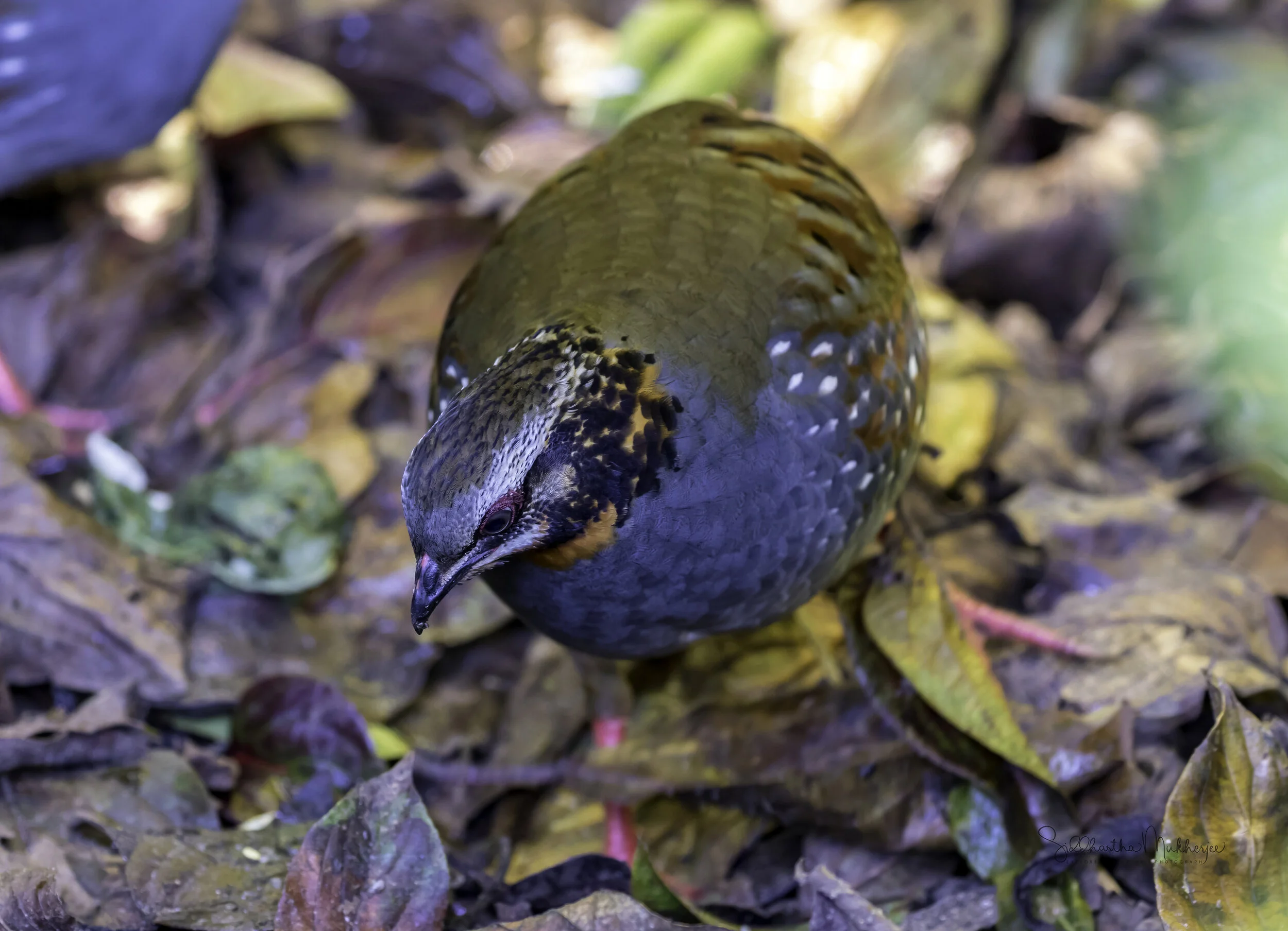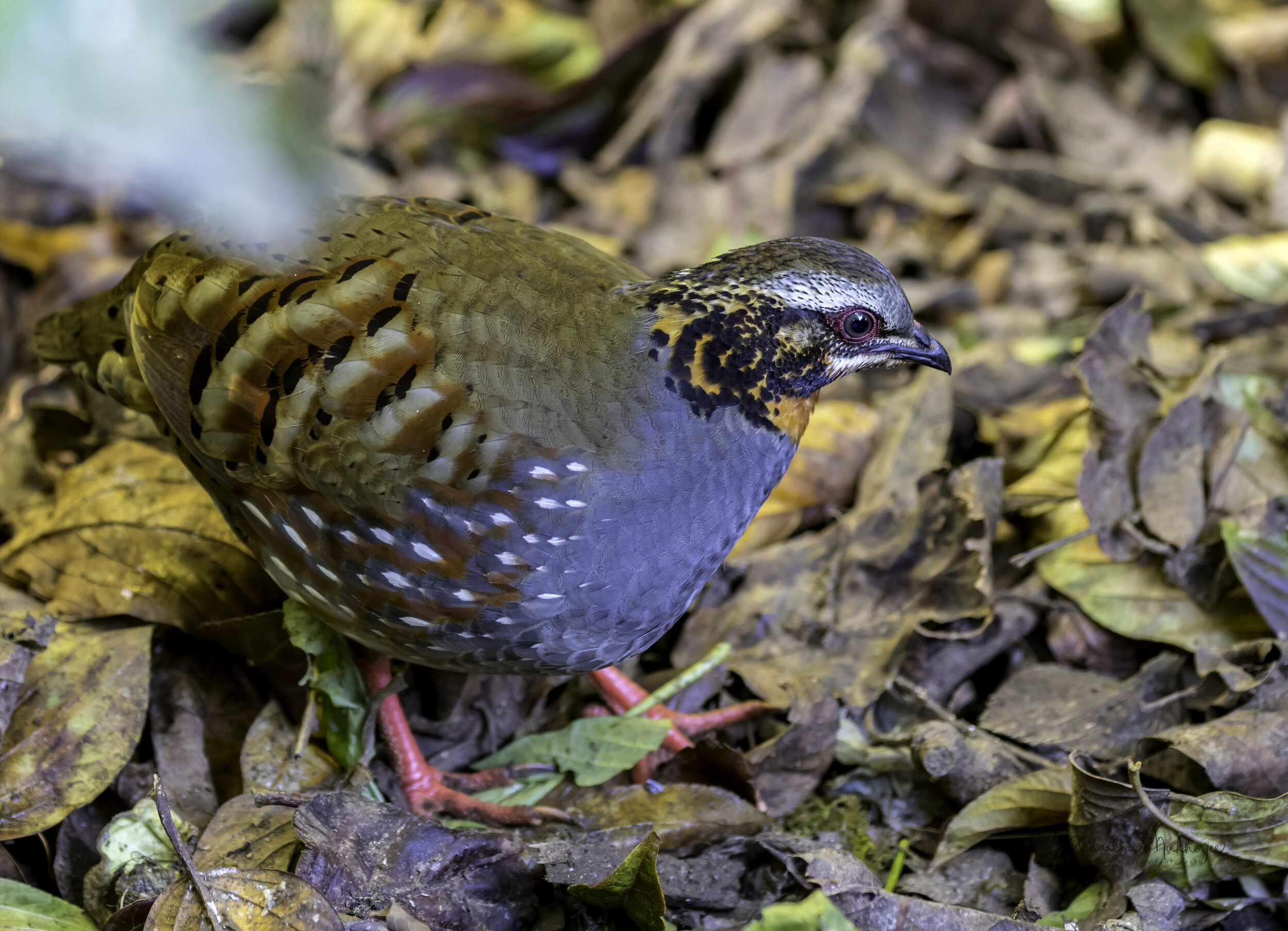Rufous-throated Partridge
Arborophila rufogularis
Doi Pha Hom Pok National Park, Chiang Mai, Thailand
We continue to spend time on the dois but this time on Doi Inthanon in search of another elusive little partridge - the Rufous-throated Partridge. Doi Inthanon is Thailand’s highest mountain and a site of unique biological interest supporting a fascinating variety of vegetation and a higher bird species total than any other protected area. Of the total of 382 species of birds so far known from Doi Inthanon, at least 266 species are residents or were formerly residents on the mountain.To read about the earlier birds of the Dois click the links below:
About 685 kilometers to the north of Bangkok lies the former seat of the ancient Lanna Kingdom & is considered one of the most scenic provinces in the country given its mountain ranges, valleys, flora and fauna. A land of misty mountains and colourful hill tribes, a playground for seasoned travellers, and a delight for adventurers. Despite its relatively small size and blissful calm, Chiang Mai truly has it all, a city that is still firmly Thai in its atmosphere and attitude. It is the second-largest changwat (province) of Thailand. Bordered by Chiang Rai to the northeast, Lampang and Lamphun to the south, Tak to the southwest, Mae Hong Son to the west and the Shan State of Myanmar to the north. Located in a verdant valley on the banks of the Ping River, Chiang Mai was founded in 1296 as the capital of the ancient Lanna Kingdom. Today it is a place where past and the present seamlessly merge with modern buildings standing side by side with venerable temples. Of all the places I have visited in Thailand, Chiang Mai with its forests and mountains and the historic city of Ayutthaya are by far my favourites.
The word Chiang itself is from North Thai, or Lanna, meaning town or city and Mai means new making Chiang Mai the New City as it was founded later than Chiang Rai, the earlier capital of King Meng Rai. The districts in the province are called amphoe, and sub-districts are called tambon. Another twist is the use of Nakhon (or Nakorn or Nakhorn), derived from the Sanskrit word Nagara, also means city, though strictly speaking it refers to a capital city such as Nakorn Sri Ayutthaya (more on Ayutthaya later). Indeed to emphasise its former status you may sometimes see Chiang Mai referred to as Nakhon Ping. Other common names of geographical features include mae (river) and doi which is north Thai for mountain - for example Doi Inthanon and Mae Ping.
The four Dois we spent our time on were Doi Inthanon, Doi Ang Khang, Doi Luang and Doi SanJu.
Doi Inthanon is Thailand’s highest mountain and a site of unique biological interest supporting a fascinating variety of vegetation and a higher bird species total than any other protected area. Of the total of 382 species of birds so far known from Doi Inthanon, at least 266 species are residents or were formerly residents on the mountain. Doi Inthanon is of particular conservation importance for those species which inhabit the moist hill evergreen forests of the upper slopes. Some, such as the Chestnut-tailed Minla and White-browed Shortwing, which are around the summit, occur in Thailand only on those few higher mountain summits which have considerable areas of hill evergreen forest above 1800 m. Doi Inthanon contains the only significant protected populations of such species in Thailand. The Ashy-throated Leaf-Warbler is found nowhere else in Thailand while an endemic race of the Green-tailed Sunbird (Aethopyga nipalensis angkanensis) is also completely confined to the summit. The Wachirathan Waterfall is one of the best sites for observing birds of fast-flowing streams. The Plumbeous Redstart and the River Chat often perch on boulders in mid-stream. The Slaty-backed Forktail can sometimes be seen. Among the many scarce arboreal birds to look out for are the Long-tailed Broadbill, Brown-throated Treecreeper, Green Cochoa and Purple Cochoa and Black – tailed Crake.
We didn’t have the good fortune to see all the species on all the mountains, that would have been impossible, but we did rack up quite a number of species - about 95 of them. The gallery today is of the equally shy and reclusive Rufous-throated Partridge.
‡‡‡‡‡
For a print of the beautiful birds from the Dois click on the button below to read my process and order a limited edition canvas.
‡‡‡‡‡
Rufous-throated Partridge
The rufous-throated partridge (Arborophila rufogularis) is a species of bird in the family Phasianidae found in montane forests in India and Southeast Asia. The International Union for Conservation of Nature (IUCN) has assessed it as a least-concern species.
The rufous-throated is 26–29 cm long weighing in at 325–430 g for the male and at 261–386 g for the female. The male has a grey forehead with an olive-brown crown and nape both having black mottles. There are also whitish supercilium and moustachial curves. The throat and sides of the neck are an orange-rufous, with black speckles. The breast and flanks are blue-grey, the upper belly is blue-grey and the central belly is whitish. The vent is buffy-brown, the mantle, back and rump are olive-brown. The scapulars and wing coverts have chestnut, black and greyish bands. The beak is dusky-brown or blackish, and the legs are pinkish or crimson. The female is similar to the male. The juvenile bird is duller below, and its crown and flanks have brown and black vermiculations. The subspecies have different patterns on their throats.
The rufous-throated partridge is found in Bangladesh, Bhutan, China, India, Laos, Myanmar, Nepal, Thailand, and Vietnam. Its natural habitat is montane forests, mainly at elevations of 1,800–3,000 metres (5,900–9,800 ft). Oak forests containing laurels and rhododendrons are preferred.
This partridge feeds in groups of five to ten birds. It eats seeds, plant shoots, berries, insects and snails. Surprised birds run or fly, sometimes flying to branches like some thrushes. Birds in a covey roost and huddle together in trees, similar to babblers. Breeding has been recorded from April to July in India and from February to May in China. The male builds a scrape in bamboo, forest undergrowth or along water. The nest is lined or padded with grass. Three to five white eggs are laid. The rufous-throated partridge gives a rising series of hu-hu whistles. In a duet, the partner's call is kew-kew-kew.
The IUCN estimates that the species's population is declining because of habitat destruction and unsustainable hunting, but the decline is not rapid, and the range is large, so the IUCN has assessed it as a least-concern species.
It was a fun time with this particular partridge because we were behind a short 3 feet wall and the bird was a few feet away on the other side. Thankfully the Canon EF 100-400mm focuses quite close so it managed to get some shots but observe the tiny depth of field.
‡‡‡‡‡
Related Posts























